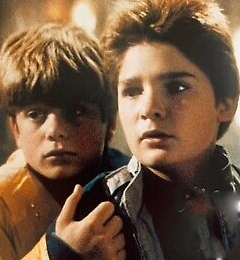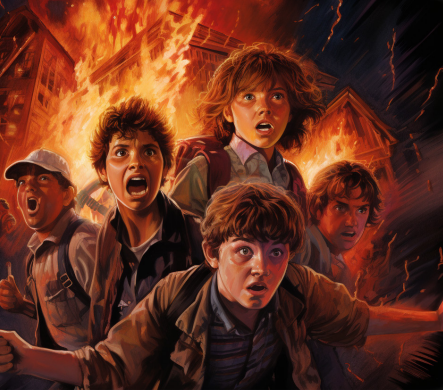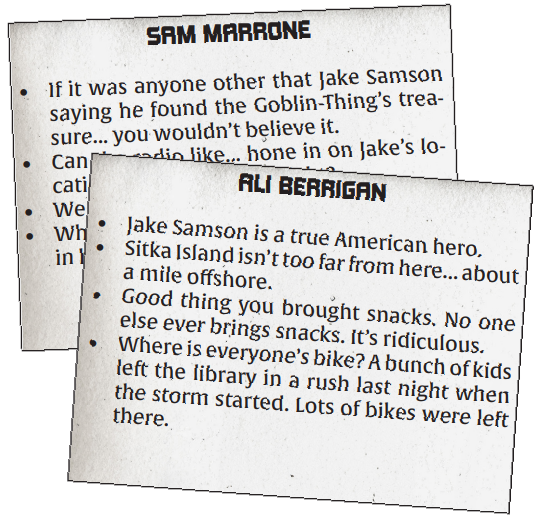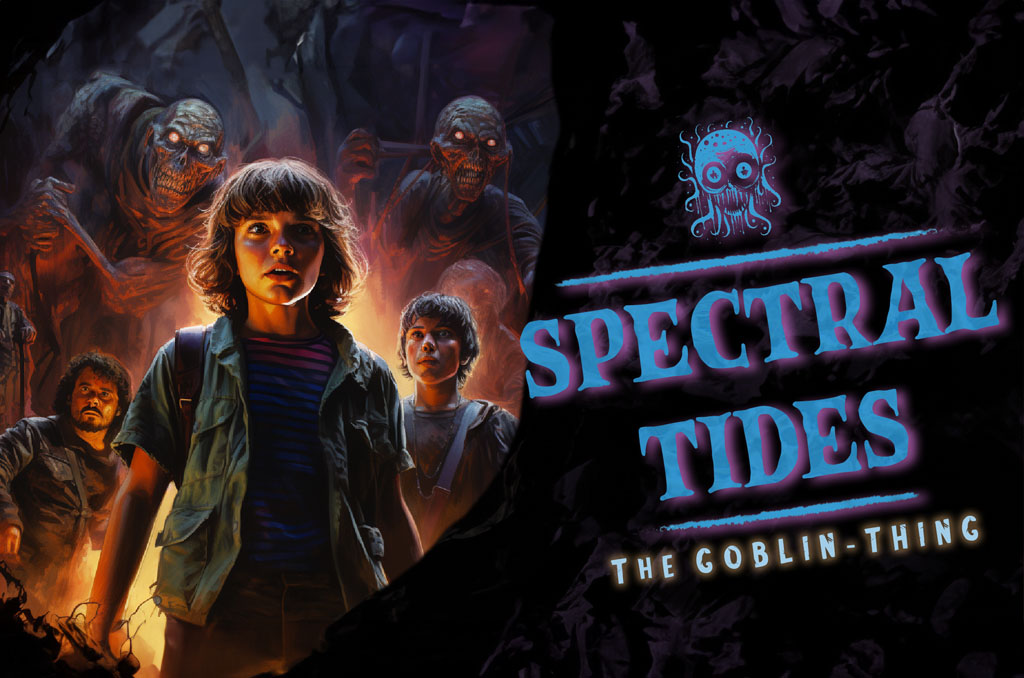“The next time you see sky, it’ll be over another town. The next time you take a test, it’ll be in some other school. Our parents, they want the best of stuff for us. But right now, they got to do what’s right for them.”
I love the energy of action horror of the 1980s. It uniquely blended suspense, adventure, and emotional depth in a perfect package. And suspension of disbelief was easy. Entertainment like The Goonies, Gremlins, Monster Squad, or even today’s Stranger Things all seem like it could be set in your home town, with your friends as the cast.

Some RPGs have successfully captured this “Spielberg Horror” magic. Both Kids on Bikes and Tales from the Loop blend nostalgia and creepiness together well. And Call of Cthulhu‘s excellent adventure, The Dare, pushes a group of 80s kids into a haunted house (and feels like it could easily star one of the Coreys…).
The key to Spielberg Horror is threefold:
- Make the protagonists friends. Spielberg’s characters have a shared history, get into trouble together, and stick together when chaos breaks out. The PCs should have fears, families, and dreams. Even more, the NPCs in the adventure should know them too, and refer to past events. “Well hello, Mikey. I’m still waiting on you to fix that window you broke…”
- Blend normalcy with the fantastic. This is key to classic 1980s films — the weirdness doesn’t start right away. The characters first have a simple goal that any kid might have — exploring an old house, looking for a hidden location, or sneaking into the carnival. Along the way, some elements remain shrouded in mystery, revealing just enough to keep players engaged and guessing. Then, as the adventure reaches its halfway point, it eventually expands into something horrific, supernatural, or alien.
- Incorporate a Moral Compass. Many of Spielberg’s works explore ethical dilemmas and the importance of doing the right thing. Introduce moral choices in your adventure, where players must decide between easy gains and doing what’s morally right. This not only adds depth to your game, but it also creates those tense scenes when the characters debate with each other the right thing is to do.
Spectral Tides: The Goblin-Thing
This month’s free adventure brings a 1980s town to life, where a legendary cryptid named the Goblin-Thing has seeped into local lore. The PCs are all friends in the small coastal town of Oak Harbor, where they learn that their best friend Jake Samson has gone missing after claiming to have found the Goblin-Thing’s treasure-filled lair. Off on a rescue mission, the PCs soon uncover an ever increasing amount of danger: an escaped murderer is on the loose, and a centuries old curse is about to be unleashed on their town.

In writing this adventure, I particularly spent time making sure that the characters and their home town felt like they meshed together. Not only do almost all of the characters have a shared backstory with each other, but they are individually friends (or enemies) with many of key the NPCs — the old man who lost his hand to a whale, the local antiquity store owner, the bullying star quarterback.
When I ran this adventure, this part really shined. All of the players commented how they felt that their characters grew up here, and automatically “knowing” many of the NPCs who lived there lent an air of authenticity to the adventure, and helped motivate them when it finally came time to save the town.
Banter Cards – A Perfect Kickoff Tool
This adventure was perfect for the “Banter Card” technique that I use to kick off some games. After all, Spielberg’s movies are chockful of kids who talk over each other constantly.

With Banter Cards, I give each player a small card with a few bullet points on it — key information about the adventure or their characters. Then, players take turns picking a statement from the card and either reading it, acting it out, or saying it in their own words. This goes around the table until all the information is out. For example:
“I can’t believe Jake found that treasure — they say it’s worth millions of dollars!” “Jake’s my best friend, he’s the only one who watches my favorite TV shows with me.” “You guys are crazy. You know all the cops are out of town right now, right??” Etc.
This technique creates an organic scene, where all the critical information about the adventure gets shared by the players, vs. a GM reading aloud an introduction. It’s high energy and really fun – try it!
Get Spectral Tides: The Goblin-Thing for FREE Here!
- Spectral Tides (GURPS Horror)
- Spectral Tides (GURPS Horror) – Printer Friendly
- Spectral Tides (Call of Cthulhu)
- Spectral Tides (Call of Cthulhu) – Printer Friendly
- Spectral Tides (OSR / Dark Places & Demogorgons)
- Spectral Tides (OSR / Dark Places & Demogorgons) – Printer Friendly
- Spectral Tides – VTT Tokens, Assets, and Audio
Watch the video overview here:
Related: 1950s Teenage Horror


in a two package?
Clearly it was late when I posted this haha. Fixed it.
I just finished running this as my group’s first-ever Cthulhu adventure. The pregen characters were awesome and made it incredibly easy for the players to get into character and learn the game’s intricacies.
We’re planning on doing a “10 years later” with these same characters coming back to honor the fallen from the siege of Oak Harbor.
If you’re considering running this, do it! It’s fun and you have a lot of control over the pacing as the keeper. It took us 3 short sessions (about 6 hours in total) but the PCs spent a lot of time on Sitka and I added a little flavor to pace it out. I didn’t want to leave 30 minutes of play for session 3. This could easily be run in 3-5 hours without feeling rushed at all.
My players didn’t go to the library at the beginning, so I floated the research to Jake’s backpack to be discovered later. I also forgot to give them the spell book page in the cabin so I put a little ritual shed nearby with dead fish and candles and it was a hit.
Thanks for all the great content! I’m going to run Dark Wicche soon as well!
Was looking for a Halloween special to run with the Kid-Thulhu rules. Concider my search concluded!
Thanks again for the amazing content!
Best wishes,
Gm for the ZeroDead Podcast
Happy to help, can’t wait to hear how it all goes!
Awsome scenario! Running it tonight looking for advice for three players session. What characters are best to choose? Are the rest of the characters in the GMs hand or is it advisable to just ignore these one
Kind regards!
Andreas
They’re all designed to work equally in this adventure, and there’s no real moments that require a specialized skillset. Just let your players pick the ones that they like best! And you can ignore the characters they don’t pick — they stayed home and will miss all the fun.